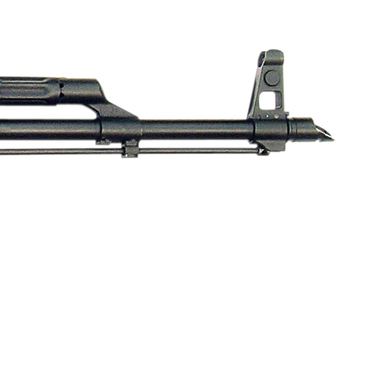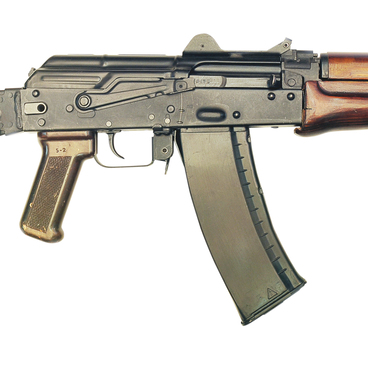In the second half of the 20th century, military machinery and small arms developed quickly. The military wanted the rifles to be more maneuverable and provide effective shooting from the most unstable positions — from the knee, from the hip, and while standing.
Engineers had to decrease the weight and dimensions while retaining the reliability and simplicity of the weapon. It could only be achieved by switching to small caliber, low pulse cartridges. In addition, the new rifle had to be simple to manufacture, so that the plants could easily switch production to the new model.
The Ministry of Defense of the USSR defined the standards for the new rifle in 1962. Four years later, the Main Artillery Directorate announced a competition to create a 5.45×39 mm cartridge rifle. Many engineers took part in it — Alexander Konstantinov from Kovrov, German Korobov and Yuri Sokolov from Tula, Yuri Alexandrov and Mikhail Kalashnikov from Izhevsk.
The engineering department started to develop a new model under Kalashnikov’s guidance. They based their design on the proven scheme of the 7.62 mm AKM, which was adopted into service in 1959. Several workgroups of the department were involved in the development of a folding stock rifle and a small-caliber light machine gun.
Alexey Kryakushin became the chief development and research engineer of the 5.45 mm small arms system. He developed a special muzzle device and its installation method for the new rifle, the new bolt head, and ejector construction. Kryakushin achieved the required accuracy of fire in bursts from the basic positions defined by the regulations — standing, lying, and from the knee.
Engineer Vladimir Klabukov created a unique folding stock for the new model. The structure was light, durable, and technologically advanced.
The first tests in 1968 showed that none of the competitors managed to reduce the weight of the weapon. The Konstantinov, Korobov, and Kalashnikov rifles were the leaders in other respects. Ground and field tests were held in several stages in 1970–1972. According to their results, the Military-Technical Council of the Soviet Ministry of Defense decided that Kalashnikov’s model should be further developed.
The Kalashnikov assault rifle of the third generation was put into service on January 18, 1974. In the second half of that year, the Izhevsk Machine-Building Plant launched the mass production of AK-74 and AKS-74, while still producing AKM on the same assembly line.
The displayed folding rifle AKS-74 was created for the airborne forces.
Engineers had to decrease the weight and dimensions while retaining the reliability and simplicity of the weapon. It could only be achieved by switching to small caliber, low pulse cartridges. In addition, the new rifle had to be simple to manufacture, so that the plants could easily switch production to the new model.
The Ministry of Defense of the USSR defined the standards for the new rifle in 1962. Four years later, the Main Artillery Directorate announced a competition to create a 5.45×39 mm cartridge rifle. Many engineers took part in it — Alexander Konstantinov from Kovrov, German Korobov and Yuri Sokolov from Tula, Yuri Alexandrov and Mikhail Kalashnikov from Izhevsk.
The engineering department started to develop a new model under Kalashnikov’s guidance. They based their design on the proven scheme of the 7.62 mm AKM, which was adopted into service in 1959. Several workgroups of the department were involved in the development of a folding stock rifle and a small-caliber light machine gun.
Alexey Kryakushin became the chief development and research engineer of the 5.45 mm small arms system. He developed a special muzzle device and its installation method for the new rifle, the new bolt head, and ejector construction. Kryakushin achieved the required accuracy of fire in bursts from the basic positions defined by the regulations — standing, lying, and from the knee.
Engineer Vladimir Klabukov created a unique folding stock for the new model. The structure was light, durable, and technologically advanced.
The first tests in 1968 showed that none of the competitors managed to reduce the weight of the weapon. The Konstantinov, Korobov, and Kalashnikov rifles were the leaders in other respects. Ground and field tests were held in several stages in 1970–1972. According to their results, the Military-Technical Council of the Soviet Ministry of Defense decided that Kalashnikov’s model should be further developed.
The Kalashnikov assault rifle of the third generation was put into service on January 18, 1974. In the second half of that year, the Izhevsk Machine-Building Plant launched the mass production of AK-74 and AKS-74, while still producing AKM on the same assembly line.
The displayed folding rifle AKS-74 was created for the airborne forces.

